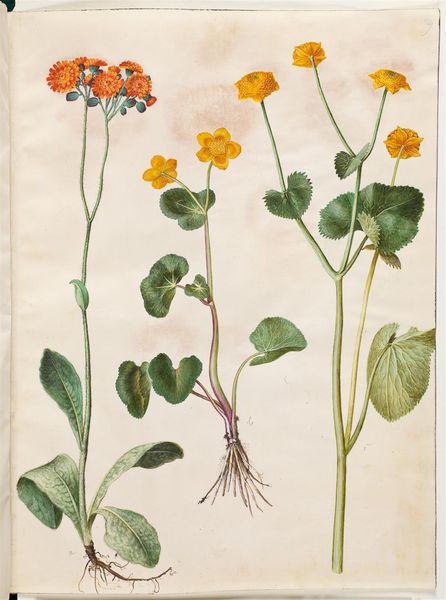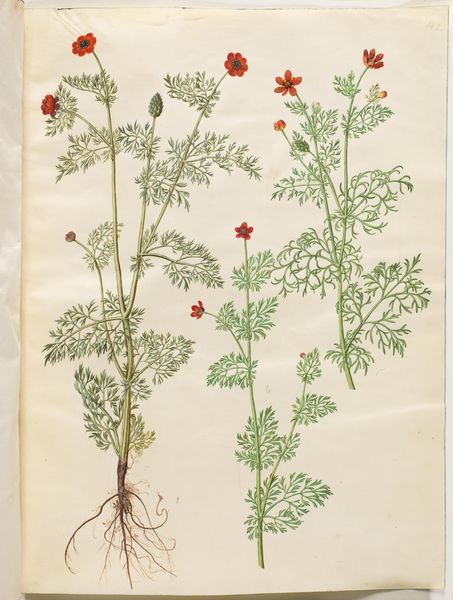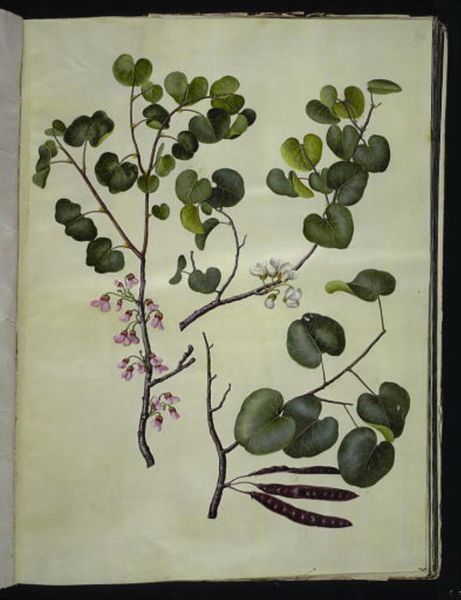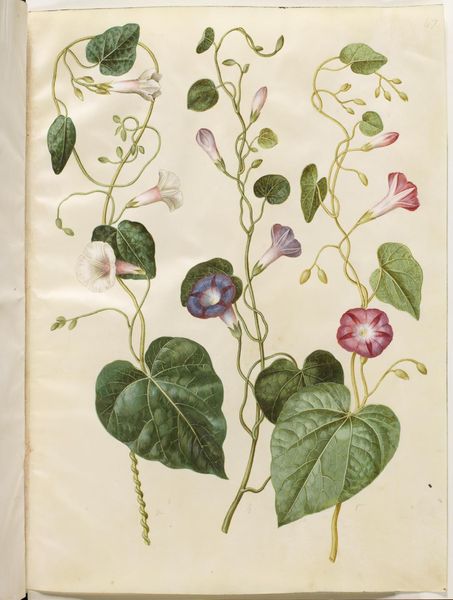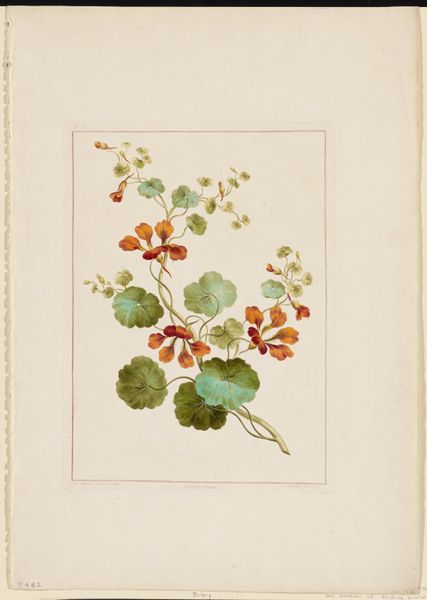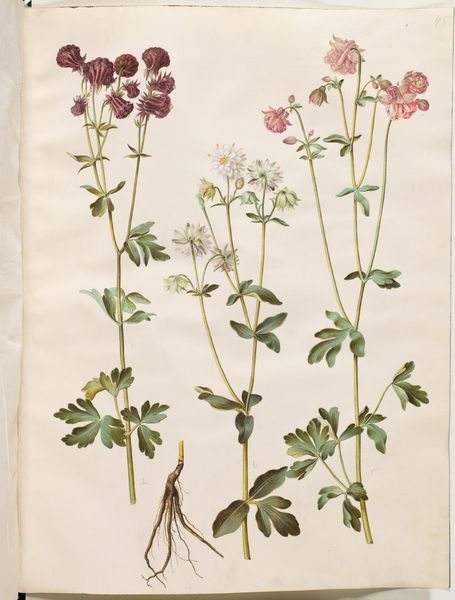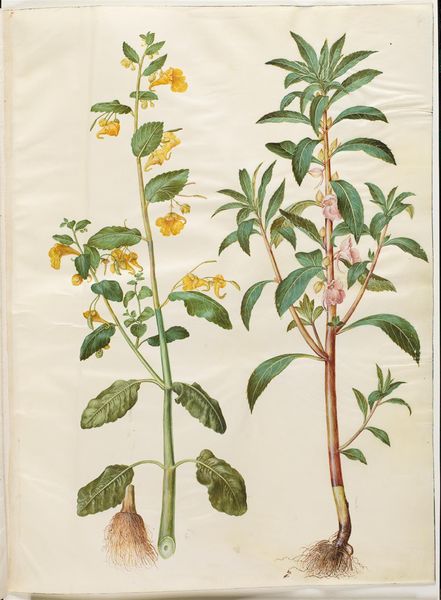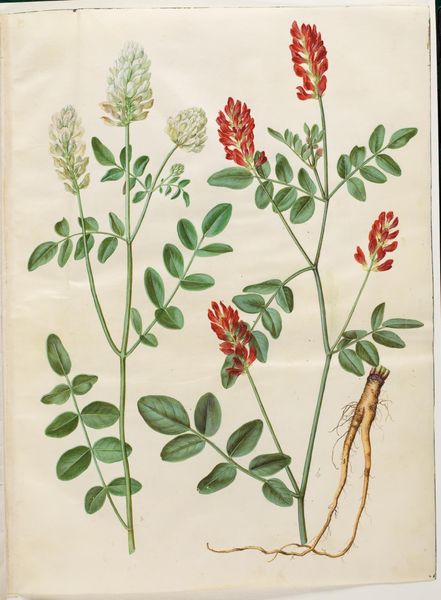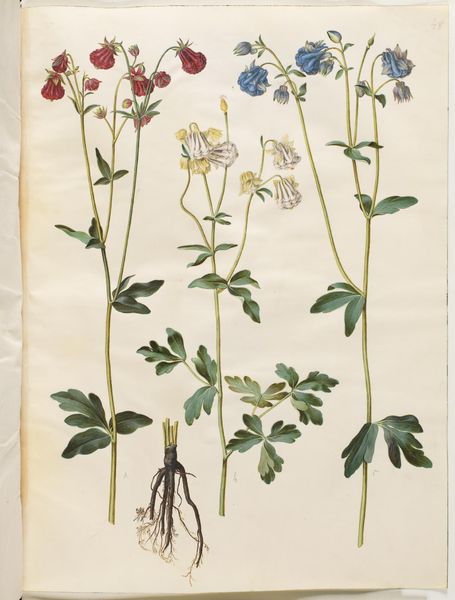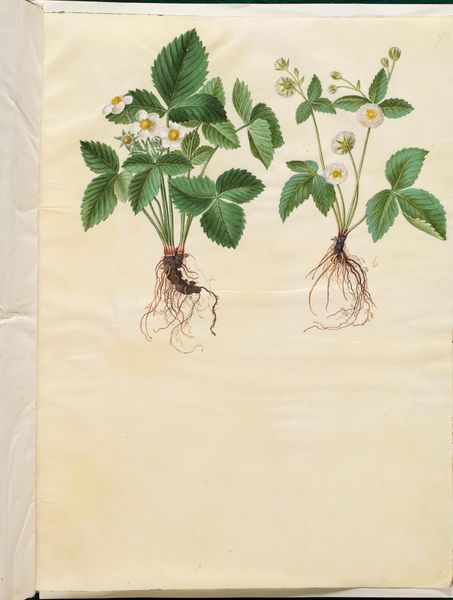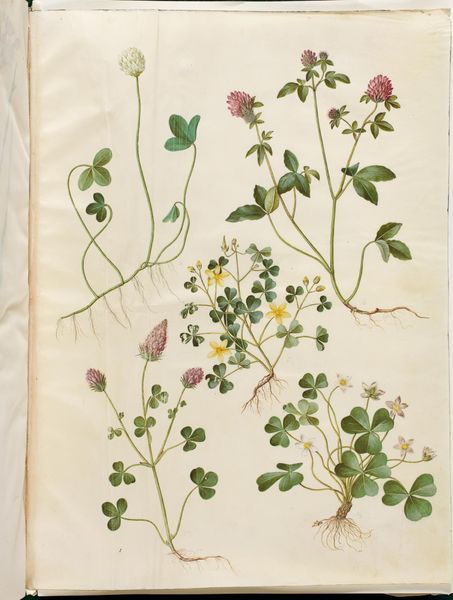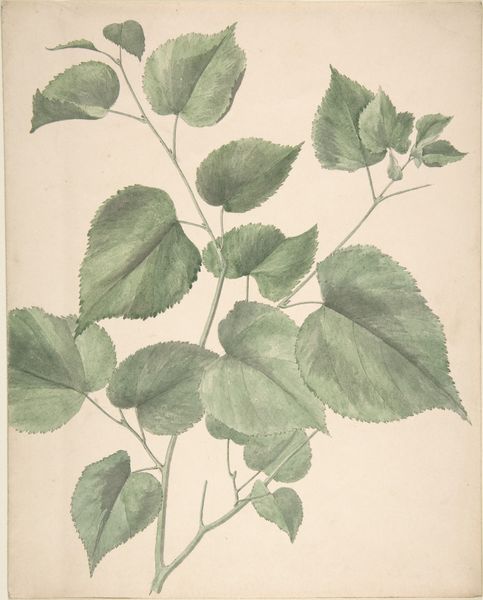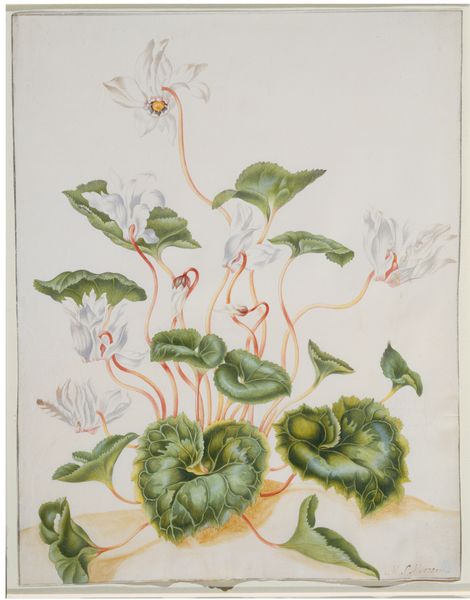
drawing, gouache, watercolor
#
drawing
#
water colours
#
gouache
#
11_renaissance
#
watercolor
#
botanical drawing
#
botanical art
#
watercolor
Dimensions: 505 mm (height) x 385 mm (width) (bladmaal)
Editor: This is “Tropaeolum minus (lille blomsterkarse),” created sometime between 1649 and 1659 by Hans Simon Holtzbecker. It's a botanical drawing done in watercolor and gouache, depicting what looks like a variety of nasturtium. The roots are particularly striking. What draws your eye in this work? Curator: Well, I’m immediately struck by the materials themselves. Look at the exquisite detail achieved with watercolor and gouache. These weren’t just artistic choices, but accessible technologies. Who had access to these materials, and for what purpose? This wasn't simply 'art' as we understand it now. Editor: You mean like, was this meant for scientific documentation rather than just aesthetic appreciation? Curator: Precisely! The meticulous rendering speaks to scientific illustration, but the very act of drawing and painting also transforms raw materials—pigments, paper—into something of economic and cultural value. Consider, too, that the pigments themselves would have been derived from other plants or minerals, undergoing a separate process of extraction and refinement. Is this simply the depiction of nature or also its consumption? Editor: That's fascinating. So, by focusing on the materials and production, we can consider broader questions about knowledge, labor, and even early capitalist economies? Curator: Exactly. Holtzbecker is participating in a system, a means of production as much as he’s creating a pretty picture. What did these images mean within the scientific and artistic marketplaces of the time? Editor: It gives me a completely different perspective, thinking about it less as a standalone artwork and more as an object produced within a specific set of material conditions. Curator: Indeed. The very act of turning the organic into the manufactured shapes how we understand it. Hopefully, that opens avenues for reconsidering even what nature might even mean.
Comments
No comments
Be the first to comment and join the conversation on the ultimate creative platform.
